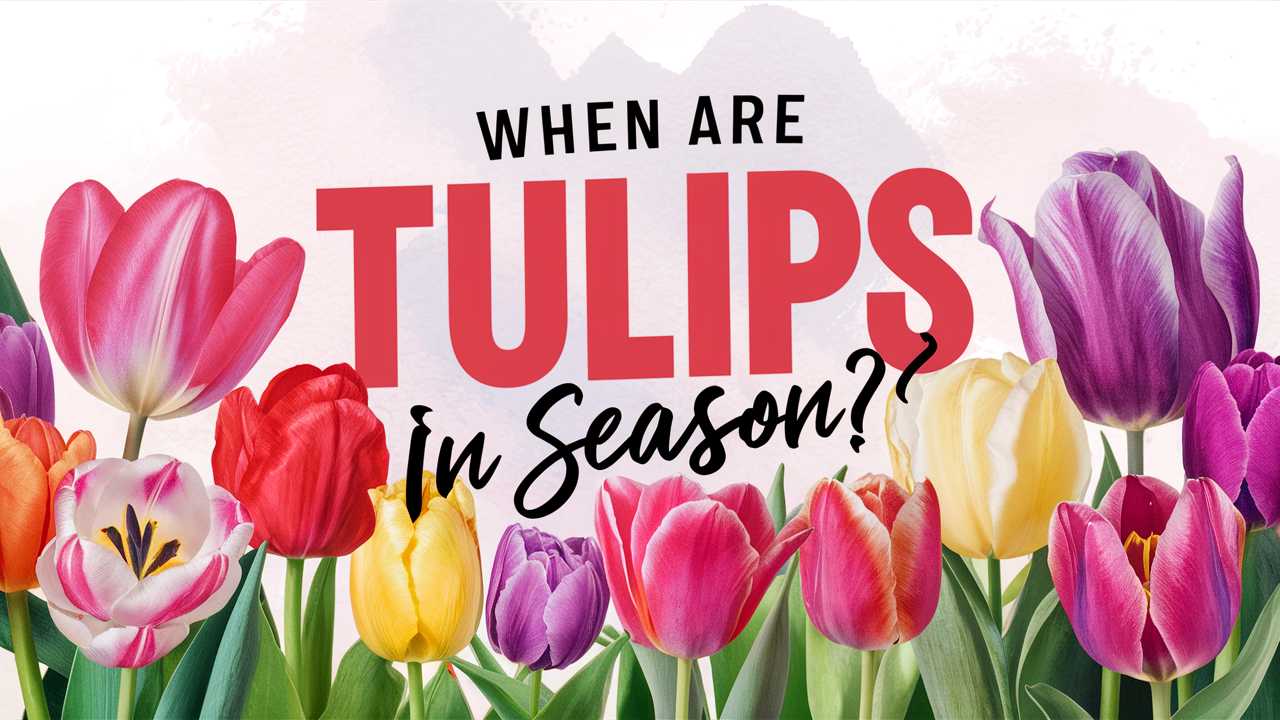In this in-depth guide, we will explore the seasons of tulips, their growth cycles, seasonal care, and how to enjoy these magnificent flowers throughout the year.
The Tulip Season: General Timing
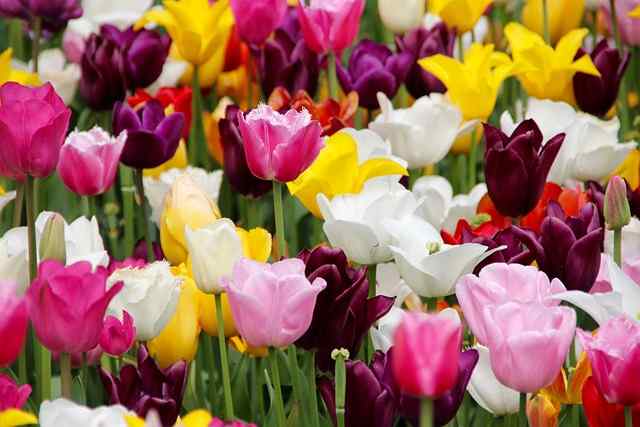
So, when exactly are tulips in season? While it can vary by region and climate, tulip season primarily spans from early to late spring, more specifically from mid-March to late May in most temperate climates.
Early Tulips
Some varieties, known as early-blooming tulips, can start flowering as early as mid-March. These include classic varieties such as ‘Darwin Hybrid’ and ‘Single Early’ tulips. These early bloomers are perfect for gardeners who want to be among the first to welcome spring into their yards.
Mid-Season Varieties
The mid-season varieties typically bloom from late April to early May. These include more popular species such as the ‘Triumph’ and ‘Parrot’ tulips. During this stage, gardens are often adorned with a stunning burst of colors as these tulips fully reveal their beauty. This makes mid-spring the peak tulip viewing time for many regions.
Late-Blooming Tulips
Lastly, late-blooming tulips can extend the bloom season into late May, and some can even survive into early June. These varieties encompass ‘Fringed Tulips’ and ‘Lily-Flowered Tulips.’ Late bloomers can provide an extended period of enjoyment, ensuring that you can appreciate the beauty of tulips beyond the typical blooming window.
Understanding the Life Cycle of Tulips
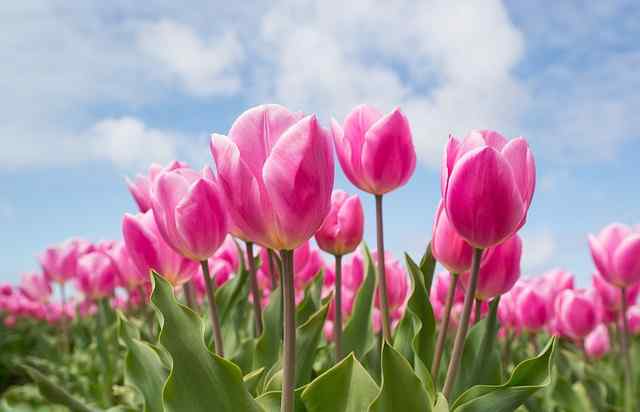
Before diving into the specifics of tulip seasons, it’s essential to understand their life cycle. Tulips are perennial bulbs, which means they grow back year after year. Their life cycle consists of several stages: germination, vegetative growth, flowering, and dormancy.
Germination usually begins in fall when the temperatures start to cool. After a cold period, the bulbs break dormancy and begin to sprout due to rising temperatures in late winter.
Vegetative growth occurs through early spring, where you’ll see green shoots pushing up through the soil, reaching for sunlight.
Flowering typically occurs in April to May, reaching full bloom in spring’s peak. This is when nature’s vibrant palette emerges, and tulips showcase their stunning colors.
Dormancy follows after the blooms fade away, typically in late spring or early summer. The foliage turns yellow and dies back, allowing the energy to be stored in the bulb for next year’s growth.
Knowing this cycle can help you plan your garden and understand the timing you can expect from your tulips.
Regional Variations in Tulip Seasons

It’s important to recognize that bloom times will vary depending on geographical location and climate. Let’s explore how tulip seasons differ across various regions.
Cool Climates
In areas with cooler spring temperatures, such as parts of Canada and the northern United States, tulips will bloom later. In these regions, you can expect to see tulips starting to blossom in late April and potentially lasting well into June. The cooler climate helps to prolong the blooming cycle, allowing tulip enthusiasts to relish their beauty longer.
Temperate Climates
In temperate regions, like much of the Midwest and Northeast, tulip blooming typically aligns with the main growing season of mid-spring, fluctuating from mid-April to early May. Gardeners in these areas have a slightly shorter window for peak blooming but can still enjoy a dazzling array of color in their landscapes.
Warmer Climates
In warmer areas, such as the southern United States, tulip bloom times can shift dramatically. Here, tulips may begin to bloom as early as late March and may fade by May due to the rising temperatures. Tulips can struggle in extremely hot conditions, so gardeners often look for strategies to provide some shade and moisture to prolong their blooms.
Exceptions to the Rule
In addition to geographic differences, local microclimates can also play a role in determining the onset of tulips’ seasonal blooms. For example, a sheltered garden may see flowers blooming earlier than those exposed to harsher weather. Additionally, urban gardens might warm up quicker than rural areas due to heat radiating from buildings and pavements.
Care and Cultivation During Tulip Season
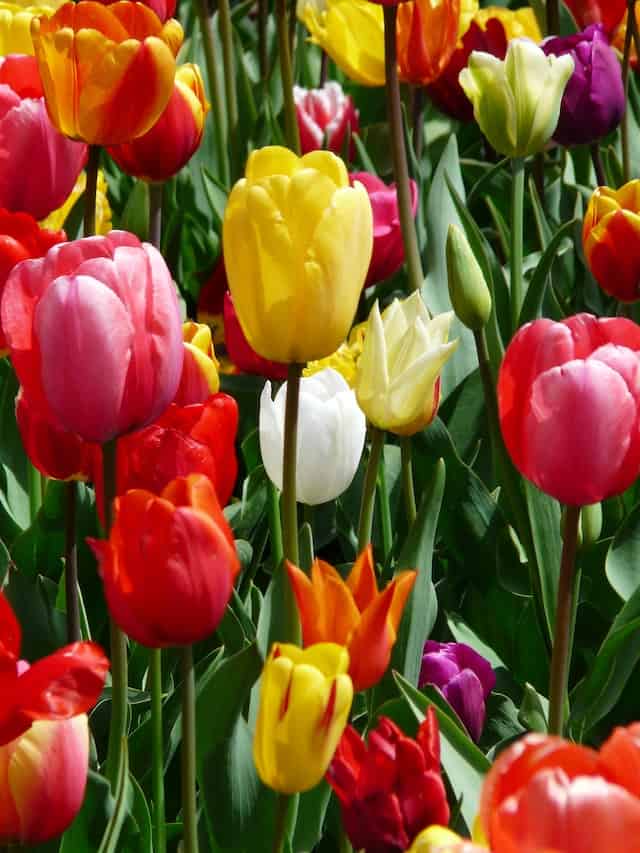
Knowing when tulips bloom is just the beginning; caring for them throughout the season is crucial for maximizing their beauty. Proper cultivation, from planting to post-bloom care, can ensure healthy blooms and vibrant colors every year.
Planting Bulbs in Fall
For those looking to grow tulips, the planting season is essential. Tulips should ideally be planted in the fall, about 6 to 8 weeks before the ground freezes. This timing allows the bulbs to establish roots before winter, ensuring they can thrive when spring arrives.
Soil and Location Considerations
Tulips prefer well-drained soil in a sunny location. This not only helps them flourish but protects them from root rot and disease. Amending the soil with compost can improve drainage and add essential nutrients. If you’re in a region with heavy clay or compact soil, consider raised beds to optimize growing conditions.
Watering Needs
During the growing season, tulips require consistent moisture, especially when the bulbs are actively growing. However, make sure not to overwater, as tulips are sensitive to soggy soil conditions. Once the blooms fade and the foliage begins to die back, watering should be minimized to allow the bulbs to enter dormancy.
Post-Bloom Care
After tulips have bloomed, allow the foliage to remain in place until it naturally withers away. This process is vital, as the leaves photosynthesize and help transfer energy back into the bulb for next year’s growth. Cutting foliage too early can result in less vigorous blooms the following spring.
Visiting Tulip Festivals and Gardens

Many regions worldwide celebrate the beauty of tulips with festivals and public displays. These events can be a delightful way to experience tulips in full bloom, offering a feast for the senses and inspiration for your gardening endeavors.
Famous Tulip Festivals
Skagit Valley Tulip Festival (USA): Located in Washington State, this festival attracts visitors from all over the country. With expansive fields filled with vibrant tulips set against the stunning backdrop of the Cascade Mountains, this festival celebrates not just the flowers but also local arts, crafts, and food.
Keukenhof Gardens (Netherlands): No discussion of tulips is complete without mentioning the iconic Keukenhof. Known as the “Garden of Europe,” Keukenhof showcases millions of tulips in a breathtaking array of colors and varieties. The park opens during the blooming season from March through May, making it a must-visit for flower lovers.
Ottawa Tulip Festival (Canada): This unique festival commemorates the gift of tulips from the Netherlands to Canada in 1945. Held each May, it combines beautiful displays of tulips with cultural events, music, and art, bringing together diverse communities in celebration.
Local Botanical Gardens
Don’t overlook local botanical gardens or community parks, as these often feature impressive tulip displays during blooming season. These settings can be more accessible and less crowded compared to festivals, providing a peaceful environment to appreciate the beauty of tulips.
Enjoying Tulips Beyond the Season
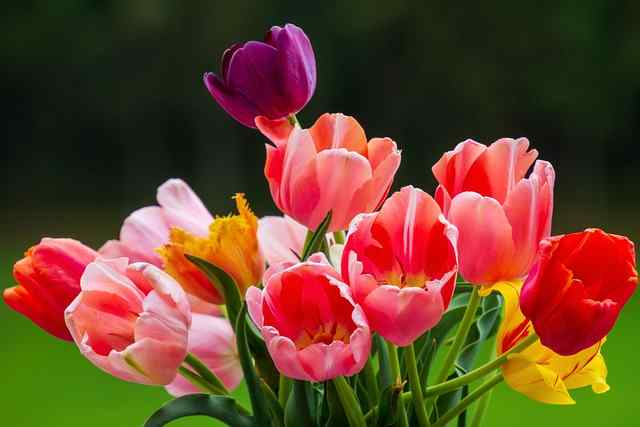
Even after tulip season concludes, there are numerous ways to keep enjoying these lovely flowers. Dried tulips can serve as charming decorations, and you can also create arrangements using flowers alongside seasonal blooms. Here are some creative ideas to incorporate tulips into your life even after their prime blooming period.
Dried Tulips and Arrangements
Dried floral arrangements have gained popularity, and tulips can be an attractive addition. To create preserved arrangements, dry tulips by hanging them upside down in a cool, dark place. Once dried, these flowers can maintain their color and charm, adding a touch of spring to your home year-round.
Planting for Success in Subsequent Seasons
If you’ve enjoyed tulips this season, consider planting a variety of bulbs in the fall for next year. Mixing early, mid, and late-blooming tulips can create a continuous display of color throughout the spring months. Additionally, incorporating other spring bulbs such as daffodils, hyacinths, and crocuses can enhance the seasonal spectacle.
Learning About Varieties
Explore new tulip varieties that you may want to grow in future seasons. There are thousands of cultivars, each with unique colors, shapes, and blooming tendencies. Consider enrolling in online gardening workshops or visiting local nurseries for expert advice on selecting the best bulbs suited for your garden.
Conclusion: Celebrating Tulips Year-Round
Understanding when tulips are in season is more than just planning for a stunning floral display; it reflects a connection to nature’s rhythm and cycle. Whether you are planting bulbs, attending tulip festivals, or simply enjoying these beautiful flowers in arrangements, knowledge and care can enhance your tulip experience.


